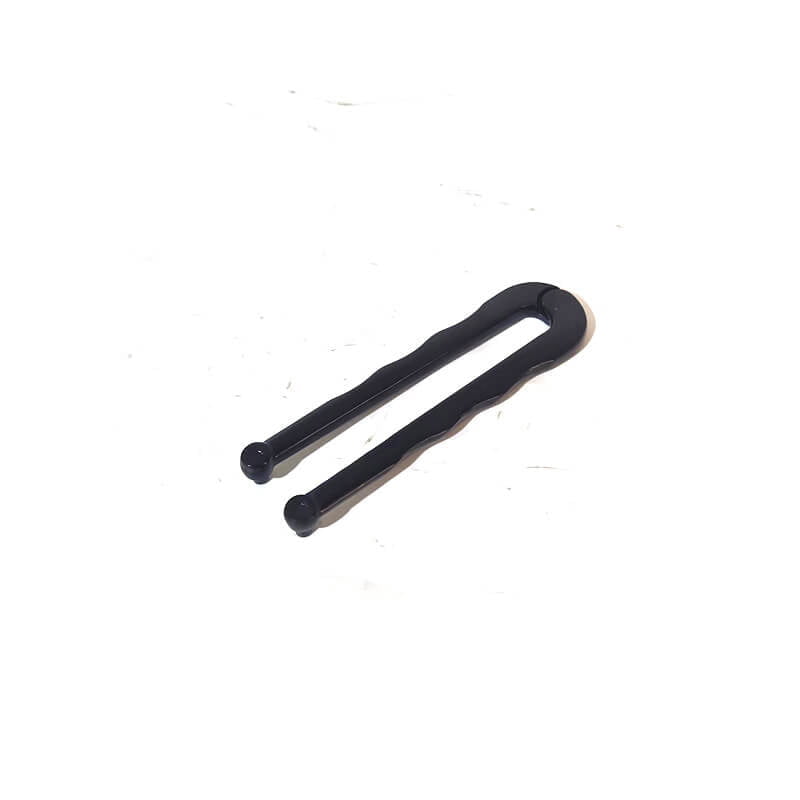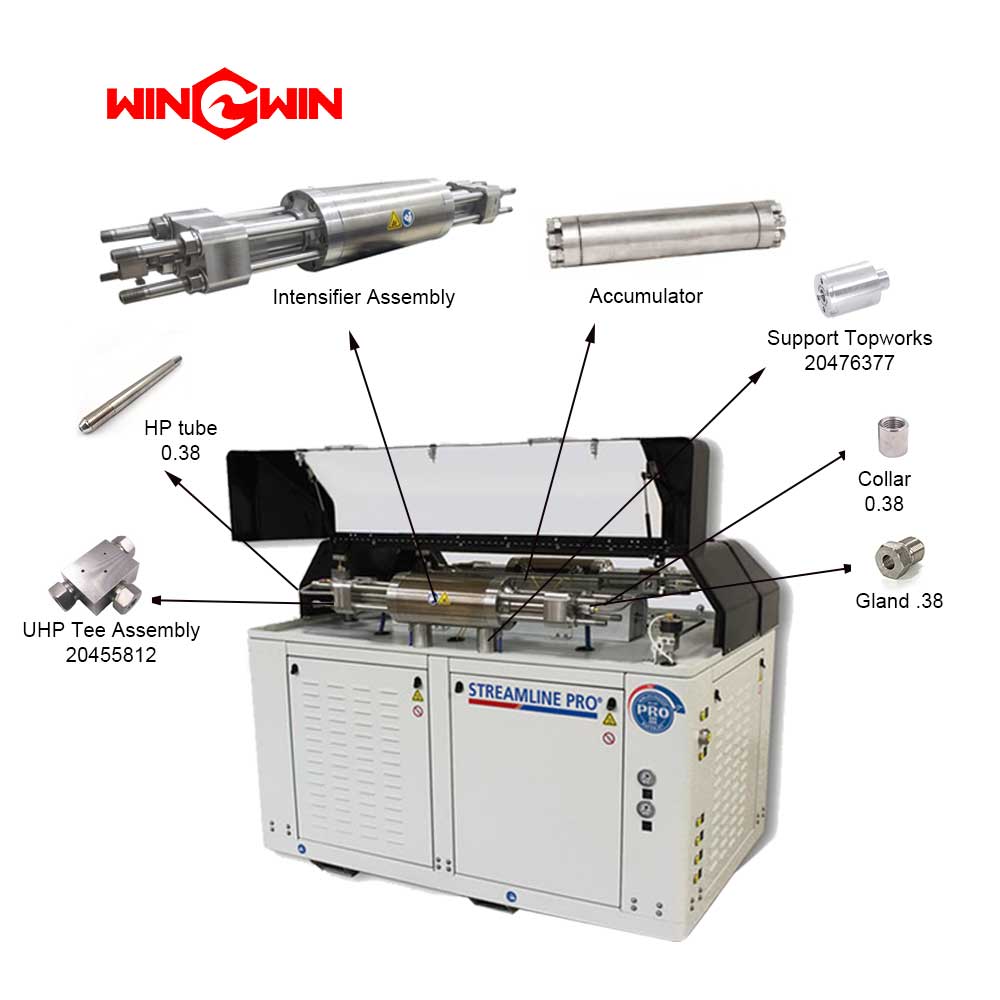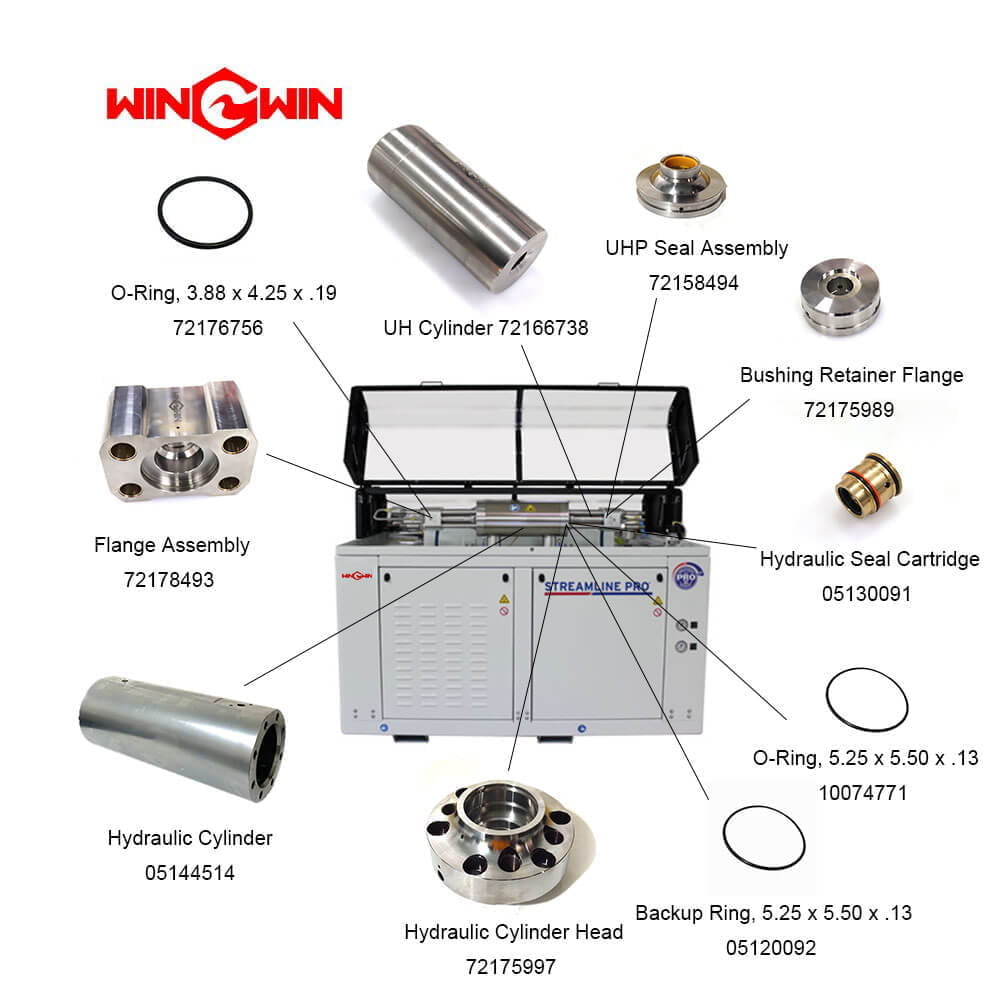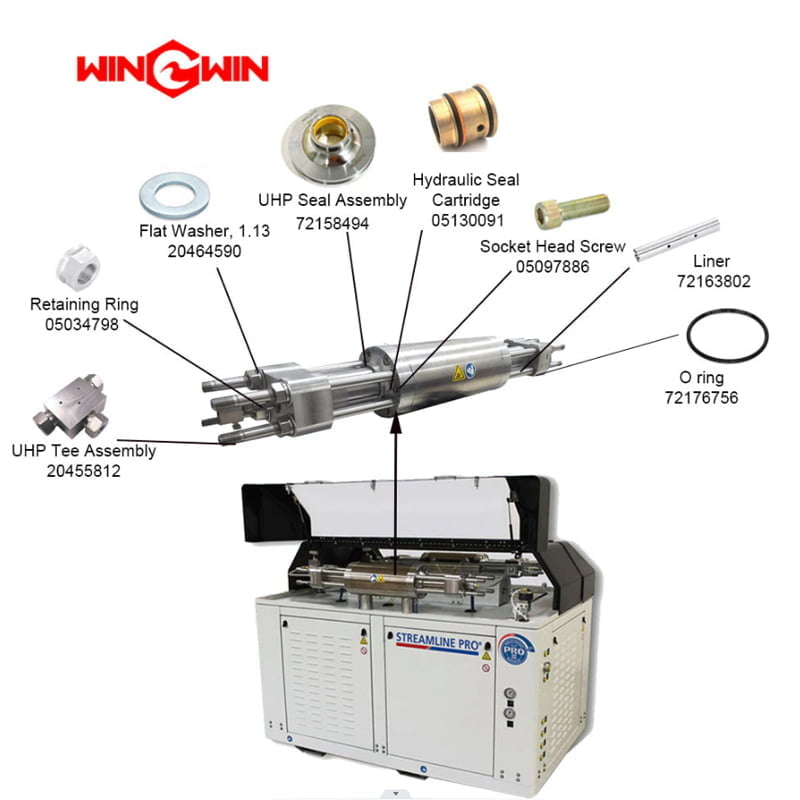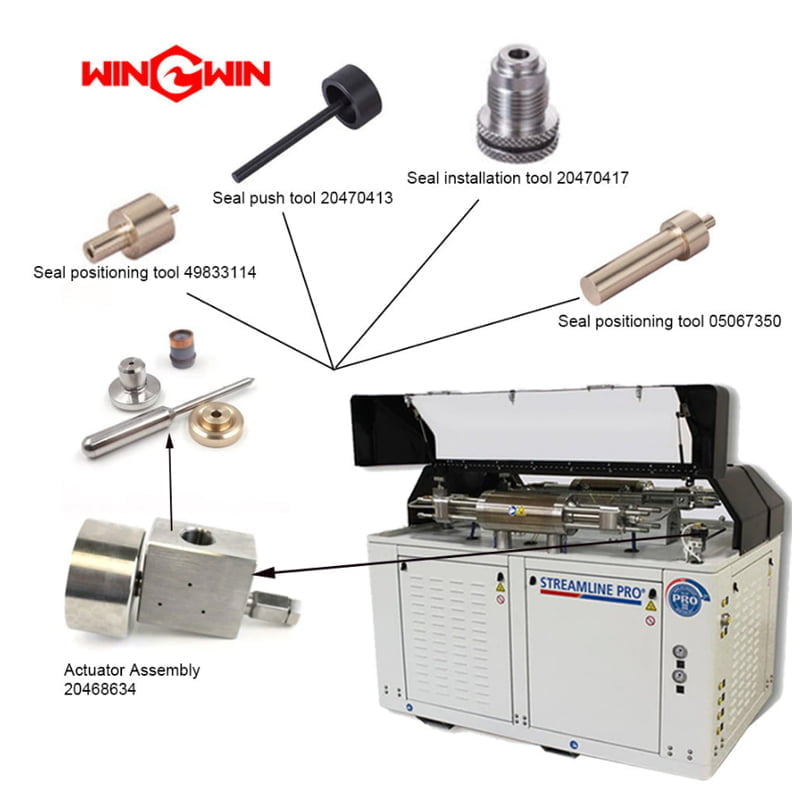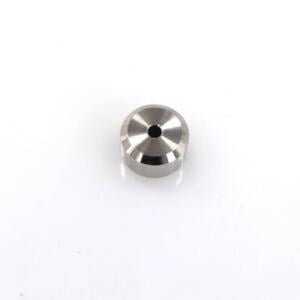Descrição
90000 PSI Water Pump Tool: Wrench Spanner 10081370
The Wrench Spanner 10081370 is a specialized water pump tool used for 90,000 psi waterjet pumps.
The tool is used to tighten or loosen various nuts and bolts on the pump, including those that secure the plunger assembly and other components.

Item | Part Number | Descrição | Quantity | Item | Part Number | Descrição | Quantity |
1 | 05146592 | Gasket, Topworks Support | 2 | 14 | 72162253 | Plunger | 2 |
2 | 20476377 | Support, Topworks | 2 | 15 | 05130091 | Hydraulic Seal Cartridge | 2 |
3 | 10118206 | O-Ring, 1.31×1.56× .13 | 2 | 16 | 72175989 | Flange do Retentor de Buchas | 2 |
4 | 05144514 | Hydraulic Cylinder | 1 | 17 | 72158494 | UHP Seal Assembly | 2 |
5 | 05098991 | Socket Head Screw, 3/8-16×3-3/4 | 8 | 18 | 72166738 | UHP Cylinder | 2 |
6 | 95688743 | Lock Washer, .38 | 8 | 19 | 72163802 | Liner | 2 |
7 | 72101190 | Piston Assembly | 1 | 20 | 20474325 | Stud, 1-1/8-12×18.31 | 8 |
8 | 10074771 | O-Ring, 5.25×5.50× .13 | 2 | 21 | 72170157 | Sealing Head Assembly | 2 |
9 | 05120092 | Backup Ring, 5.25×5.50× .13 | 2 | 22 | 72178493 | Flange Assembly | 2 |
10 | 72175997 | Hydraulic Cylinder Head | 2 | 23 | 20464590 | Flat Washer, 1.13 | 8 |
11 | 05097886 | Socket Head Screw, 3/4-16×2-1/4 | 12 | 24 | 20461761 | Hex Nut, 1-1/8-12 | 8 |
12 | 05144183 | Spacer Assembly, Proximity Switch | 2 | 25 | 20489339 | Adapter, JIC/Pipe, 50× .38 | 1 |
05144191 | O-Ring, .69× .88× .09 | 26 | 72176756 | O-Ring, 3.88×4.25× .19 | 6 | ||
13 | 72141569 | Kit, Proximity Switch | 2 | ||||
| 72134224 | Interruptor de proximidade | ||||||
95119012 | Socket Head Screw, 1/4-20×1 |

– Design: The wrench spanner typically has a specific size and shape to fit the nuts and bolts on the pump, and is designed to provide a secure grip for applying the necessary torque.
The water pump tool may include a variety of components, such as a handle, jaws, and locking mechanism, depending on the specific application.
– Material: The components of the wrench spanner are typically made from high-strength materials like steel or aluminum, which can withstand the forces involved in the pump system.
The water pump tool must also be resistant to wear and corrosion from the water and abrasive particles.
– Maintenance: Proper maintenance and inspection of the wrench spanner is important to ensure its continued reliability and performance.
Over time, the water pump tool may become worn or damaged, which could compromise its ability to provide a secure grip or apply the necessary torque.
Regular inspection and replacement of worn or damaged components can help prevent these problems and ensure the safe and efficient operation of the pump.
– Compatibility: It’s important to ensure that the wrench spanner is compatible with the specific model of waterjet pump being used.
The water pump tool must be designed to fit the nuts and bolts on the pump and provide the necessary torque for proper tightening or loosening.
Using an incompatible tool could cause damage to the pump components or the tool itself.
– Use: Proper use of the wrench spanner is important to ensure that the nuts and bolts on the pump are tightened to the correct specifications.
Over-tightening or under-tightening could lead to damage or malfunction of the pump components.
The operator should follow our recommendations for torque specifications and use the water pump tool accordingly.
– Performance: The wrench spanner plays a critical role in ensuring the safe and efficient operation of the waterjet pump.
Properly tightened nuts and bolts are necessary to maintain the integrity and stability of the pump components.
Regular inspection and maintenance of the water pump tool can help ensure that it is performing properly and prevent issues from arising.
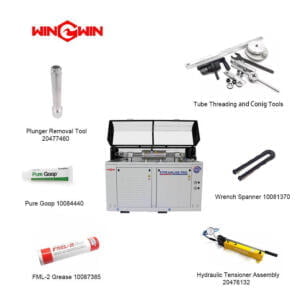
What are common problems that can occur with the water pump tool wrench spanner?
1. Improper use
One of the most common problems with wrench spanners is improper use.
If the wrench is not used correctly, it can cause damage to the pump or other parts. For example, over-tightening or under-tightening bolts can cause leaks or other issues.
2. Worn or damaged teeth
The teeth on the wrench spanner can become worn or damaged over time, which can reduce its effectiveness and make it difficult to use.
Worn or damaged teeth can also cause slippage, which can be dangerous and cause injury.
3. Incorrect size
Using a wrench spanner that is the incorrect size for the bolts or nuts can cause damage to the pump or other components.
It is important to use the correct size wrench spanner for the specific bolts or nuts being serviced.
4. Rust or corrosion
Rust or corrosion can occur on the wrench spanner, especially if it is not properly stored and maintained.
Rust or corrosion can cause the wrench spanner to become less effective and can also cause damage to the pump or other components.
5. Breakage
If the wrench spanner is made of low-quality materials or is subjected to excessive force, it can break or become damaged.
To avoid these problems, it is important to use the wrench spanner properly and to regularly inspect and maintain it:
a. Store the wrench spanner in a dry and clean environment to prevent rust or corrosion.
b. Inspect the teeth regularly for wear or damage, and replace the wrench spanner if necessary.
c. Use the correct size wrench spanner for the specific bolts or nuts being serviced.
d. Avoid using excessive force when using the wrench spanner, as this can cause damage to the pump or other components.
e. Follow our manufacturer’s recommendations for use and maintenance of the wrench spanner.
How can you determine the correct torque settings for the water pump tool wrench spanner?
Determining the correct torque settings for the wrench spanner depends on several factors, including the size of the bolt or nut being tightened or loosened, the material of the bolt or nut, and the specific manufacturer’s recommendations for the 90k waterjet pump.
1. Use a torque wrench
A torque wrench is a tool that is designed to measure the amount of torque being applied to a bolt or nut.
Using a torque wrench can help ensure that the correct amount of force is being applied to tighten or loosen the bolt or nut.
2. Use a torque chart
A torque chart is a reference guide that provides general torque settings for different sizes of bolts and nuts, based on the material and type of bolt or nut.
3. Consider the material of the bolt or nut
Different materials require different amounts of torque to achieve the same clamping force.
For example, a bolt made of steel will require more torque toachieve the same clamping force as a bolt made of aluminum.
4. Use a thread lubricant
Using a thread lubricant, such as FML-2 grease, can help reduce the friction between the bolt or nut and the surface it is being tightened against.
This can help achieve the desired clamping force with less torque.
By following these guidelines and consulting our manufacturer’s recommendations, you can determine the correct torque settings for the wrench spanner and ensure that the 90k waterjet pump is being maintained properly.
Any other requirements for the water pump tool, please consult with us.

